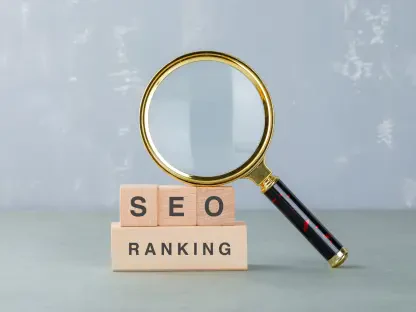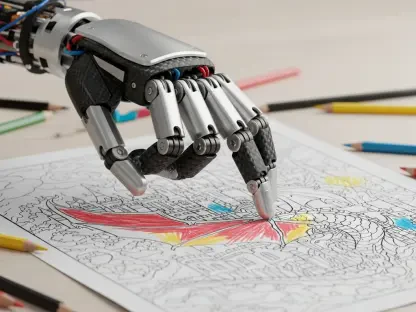Today, we’re thrilled to sit down with Anastasia Braitsik, a globally recognized leader in SEO, content marketing, and data analytics. With her deep understanding of how digital platforms shape consumer behavior, Anastasia is the perfect person to unpack the growing issue of social media-driven overconsumption. In this interview, we’ll explore how social media transforms shopping into a subconscious urge, the powerful role of influencers, the impact of algorithms on our buying habits, and the social and environmental consequences of this trend. We’ll also touch on emerging movements that aim to counter this culture of excess. Let’s dive into this critical conversation about the intersection of digital media and consumer behavior.
Can you share what first drew your attention to the connection between social media and overconsumption?
Honestly, it started with observing my own behavior a few years back. I’d be scrolling through Instagram, and suddenly I’d feel this urge to buy something I didn’t even need—a new gadget or a trendy outfit—just because it popped up in a post. It got me thinking about how these platforms are designed to nudge us toward spending. Then, as I dug into the data for my work, I saw the bigger picture: stats showing impulse buying spiking with social media use. It’s not just personal; it’s a systemic issue baked into the way these apps function.
How do you think social media turns everyday scrolling into a subtle push to shop?
Social media blurs the line between content and commerce so seamlessly. Every post, story, or reel can double as an ad without feeling like one. Platforms are built to keep you engaged, and when you’re emotionally hooked—whether it’s envy, aspiration, or just boredom—they slip in products as the solution. It’s psychological. You’re not just seeing a friend’s update; you’re seeing a lifestyle you’re told you can buy into. That constant exposure normalizes spending as part of your online experience.
What makes influencers so effective at driving this desire to buy, sometimes by as much as 50% as some studies suggest?
Influencers have mastered the art of relatability mixed with aspiration. They’re not faceless corporations; they feel like friends or role models. When they endorse a product, it’s wrapped in a story or a lifestyle that seems attainable—like if you buy this skincare product, you’re one step closer to their glowy, perfect life. Trust plays a huge role, especially with micro-influencers who seem more authentic. But it’s also the curated perfection of their feeds. People, especially younger audiences, buy into the dream, not just the item.
Let’s talk about algorithms. How do they contribute to pushing an idealized lifestyle that fuels overconsumption?
Algorithms are like digital mind-readers. They track every click, like, and search to build a profile of what you might want—or what they can make you want. Then they feed you content that reinforces an idealized version of life: luxury, trends, and must-haves. It’s not random; it’s tailored to exploit insecurities or desires. If you’ve looked at a pair of sneakers once, suddenly your feed is full of sneaker hauls and reviews. It creates this echo chamber where buying feels inevitable, almost like the app is egging you on.
There are stories of kids facing social pressure, even bullying, for not owning trendy items like a specific tumbler. How pervasive do you think this issue is among younger generations?
It’s heartbreaking, but it’s incredibly common. Social media amplifies peer pressure by turning material things into status symbols. Kids and teens see owning the ‘right’ stuff as a ticket to acceptance—whether it’s a branded water bottle, the latest phone, or a fast-fashion outfit. I’ve heard countless anecdotes of young people feeling left out or mocked for not keeping up. It’s not just bullying; it’s a deeper hit to their self-worth when identity gets tied to possessions, and social media only magnifies that by showcasing who’s ‘in’ and who’s ‘out.’
Features like TikTok Shop make purchasing almost too easy. Why do you think this kind of integration is so risky for encouraging overconsumption?
It’s all about reducing friction. When you can buy something without leaving the app—literally in two taps with payment systems like Apple Pay—it eliminates any moment to pause and think, ‘Do I really need this?’ TikTok Shop and similar features turn a fleeting desire into an instant purchase. There’s no stepping away to reconsider, and that’s by design. It preys on impulse, especially when emotions are high from watching a compelling video. It’s dangerous because it normalizes spending as a reflex rather than a decision.
Beyond personal impacts, overconsumption driven by social media has environmental consequences, like the massive waste from fast fashion. How significant do you see this problem becoming?
It’s already a crisis. The fashion industry, fueled by social media trends, churns out millions of tons of waste annually—much of it non-biodegradable materials like polyester. Every viral trend means a spike in cheap, disposable clothing that ends up in landfills. Social media creates this cycle of ‘buy, wear once, discard’ because there’s always a new look to chase. If we don’t shift how we engage with these platforms, the environmental toll will only grow. It’s not just about personal habits; it’s a systemic issue tied to how social media drives demand for fast, cheap goods.
There’s some pushback with trends like ‘deinfluencing’ and ‘Project Pan’ that encourage mindful consumption. How optimistic are you about these movements making a difference?
I’m cautiously hopeful. These trends are a breath of fresh air because they challenge the narrative of ‘more is better.’ ‘Deinfluencing’—where creators call out overhyped products—helps people question what they’re sold, while ‘Project Pan’ promotes using what you have before buying more. They’re gaining traction, especially among younger users who are fed up with the guilt of overbuying. But they’re still a drop in the bucket compared to the overwhelming consumerism pushed by platforms. For real change, we need broader awareness and maybe even platform accountability.
What is your forecast for the future of social media’s role in consumer behavior?
I think we’re at a crossroads. On one hand, social media will likely get even more integrated with shopping—think augmented reality try-ons or AI-driven personal shopping right in your feed. That could push overconsumption to new heights. On the other hand, I see growing awareness and fatigue with this culture of excess. If movements like deinfluencing scale up, and if platforms face pressure to prioritize user well-being over profits, we might see a shift toward more mindful engagement. But it’s going to take collective effort—users, creators, and regulators—to tip the balance away from unchecked consumerism.









